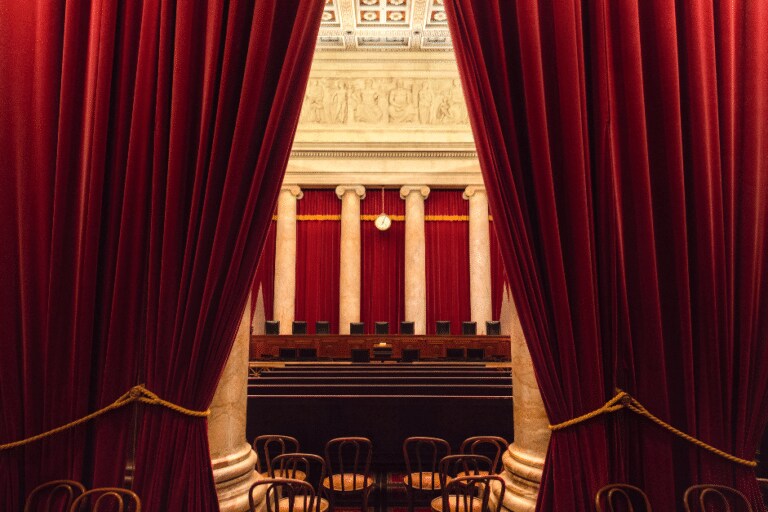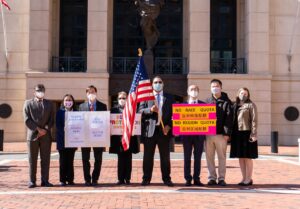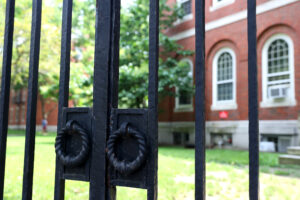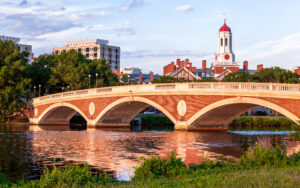The Hill: The Supreme Court failed Asian Americans a century ago. What will it do now?

One hundred years ago, on Nov. 13, 1922, the U.S. Supreme Court held that an Asian man could not become an American citizen because of his race. Two weeks ago, the Supreme Court considered whether universities can exclude Asian students because of their race.
History does not repeat itself, but it does rhyme.
First, the story of Ozawa v. United States: Takao Ozawa had lived in the United States for 28 years by the time his case reached the Supreme Court. He attended the University of California and sent his children to American schools. “In name I am not an American,” the Japanese-born Ozawa wrote in his brief, “but at heart I am a true American.”
The Naturalization Act of 1790 initially allowed only “free white persons” to become American citizens. In 1870, the law was expanded to include former slaves and Black immigrants (or “aliens of African nativity and persons of African descent”). But not Asians.
In his brief, Ozawa argued he was a person of good character: “I am always trying my best to conduct myself according to the Golden Rule.” Denying him citizenship because of his race was arbitrary and unjust. Benedict Arnold was a white man from a good family, Ozawa pointed out, yet he was a traitor. Meanwhile, Booker T. Washington “was a poor Black slave” who “had done a great deal of good to the United States.”
“The color of skin is controlled by climate,” Ozawa wrote. It did not determine his worth as an individual.
At the time, America was gripped by xenophobic fears of “Yellow Peril” — the perceived threat of Asian occupation and dominance. In 1882, Congress barred Chinese laborers from entering the country. The San Francisco Chronicle warned that Japanese immigrants were almost certainly spies. Jack London penned a 1904 short story imagining that China, with Japan’s help, would take over the world in 1976 because of its “amazing birth rate.” (The only solution, London suggested, was biological warfare: The story ends with the West airdropping “scores of plagues” on China, killing “hundreds of millions” of Chinese people.)
This was the America in which Takao Ozawa lived. Still, he appealed to the Supreme Court for the right to become an American, pleading to be considered on his own merits — for his “honesty and industriousness.” He was denied.
The law required “a racial, and not an individual, test,” Justice George Sutherland wrote in the court’s opinion. (Ironically, Sutherland was an immigrant himself: He was born in England to a Scottish father, and grew up in Utah.)
Ozawa’s race automatically disqualified him from American citizenship. Of course, Justice Sutherland wrote, the court was not implying “any suggestion of individual unworthiness or racial inferiority.” Ozawa’s character was irrelevant. What mattered was that he was Asian.
One hundred years after the Ozawa decision, two American universities are trying to convince the court that applicants’ race matters. Students for Fair Admissions, the petitioners who brought cases against the University of North Carolina and Harvard, argue in their brief that “[a] person’s skin color says nothing about who they are, what they think, or where they’ve been.” But UNC and Harvard disagree. “We just don’t think that is true when you look at American society as it exists,” UNC’s counsel said at the Oct. 31 oral arguments.
The universities are defending their race-conscious admissions policies, which increase the Black and Hispanic share of student bodies but decrease the Asian share. For Asian applicants, “race is a minus,” as one of the petitioners’ attorneys bluntly put it.
At Harvard, Asian applicants reportedly are consistently given a lower personality score than other applicants. One admissions officer dismissively called an application “so typical of other Asian applications I’ve read.” College prep books and coaches encourage Asian applicants to “appear less Asian.”
This crude racial stereotyping is, as one of the petitioners’ attorneys said at oral arguments, “a predictable result of letting universities use race in highly subjective processes.” When applicants’ race matters, admissions officers use it as a determining factor to achieve a desired racial makeup on campus — and on many elite campuses, that apparently means fewer Asians.
“Who are getting into the best colleges, in disproportionate numbers?” a white teenage girl asked in a1988 Doonesbury comic strip. “Asian kids! It’s not fair.” The teacher in Doonesbury called the girl’s comment racist — but what was considered racist in a 1988 comic is now de rigueur at some universities.
Excluding anyone because of race is as unjust today as it was in 1922. Barring Asians in the name of diversity is especially cruel: “Asian” is a broad, flawed classification that encompasses 60 percent of the world’s population and includes remarkable diversity in experience, appearance, household income, and education.
Last year, Pew Research Center conducted a large focus group study on “What It Means to Be Asian in America.” Many interviewees acknowledged feeling only a tenuous connection to the pan-ethnic label “Asian,” which, according to them, doesn’t convey meaningful information about who they really are. One interviewee said the only time he consciously identifies as Asian is when he checks off a box for an application or form.
“I think we’re all unique and different,” another interviewee told Pew. “We come from different cultures and backgrounds. We come from unique stories, not just as a group, but as individual humans.”
A century ago, the Supreme Court failed Takao Ozawa. Now, with the UNC and Harvard affirmative action cases, the court has the opportunity to do something right: ensure that college applicants are considered as individuals, not rejected on the basis of race.
This op-ed was originally published at The Hill on November 14, 2022.











